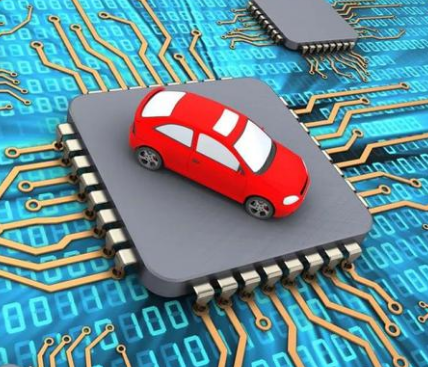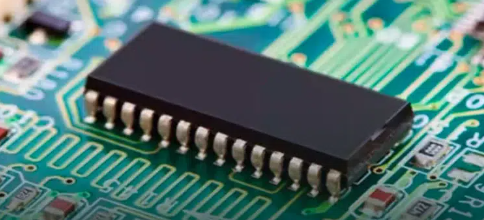AMEYA360 explains:How many chips are included in new energy vehicles
New energy vehicles are an important direction for the future development of the automotive industry, and the heart of them is the automotive chip. Automotive chips are an important part of automotive electronic systems. They are responsible for collecting and processing information from various parts of the car, and then controlling various operations of the car based on this information. Below we will mainly introduce the types of automotive chips.

How many chips does a car need?Over the past few decades, the application of semiconductor products in automobiles has rapidly expanded, and automotive electronics has become one of the fastest-growing market segments. According to data , the number of automotive chips required for traditional fuel vehicles is 600-700, and the number of automotive chips required for electric vehicles will increase to 1,600 per vehicle, and the demand for chips for more advanced smart cars is expected to increase to 3,000 chips per vehicle.
What are the major categories of automotive chips?
Control chipControl chip: MCU, SOC
The control chip (MCU), also known as “micro control unit”, is responsible for computing power and processing, and is used for engine/chassis/body control, etc., such as AI chips for autonomous driving perception and fusion. Nowadays, more and more chips are installed on cars. From power systems, to vehicle systems, to safety systems, we can see a large number of chips. MCU accounts for about 30% of the number of semiconductor devices used in a car.
Computing chipsComputing chips; CPU, GPU, FPGA, etc.
Central processing unit (CPU) chip: In cars, CPU chips are mainly used in car infotainment systems, such as car navigation, music playback, etc. This chip can handle complex computing tasks, connect to multimedia interfaces, and provide powerful processing capabilities.
Graphics processing unit (GPU) chip: Mainly used in Advanced Driver Assistance System (ADAS) and autonomous driving systems, used to process large amounts of video and image data for object recognition, pedestrian recognition, driving route planning, etc.
Power chipsPower chips: IGBT, silicon carbide, power MOSFET
Power semiconductors are the core of power conversion and circuit control in electronic devices. They are mainly used to change voltage and frequency, DC to AC conversion, etc. in electronic devices. In new energy vehicles, the average usage of medium and high-voltage MOSFETs per vehicle has increased to more than 200.
Communication chipsCommunication chips: cellular, WLAN, CAN/LIN, satellite positioning, NFC, Bluetooth, ETC, Ethernet, etc.
The wireless communication chip can realize the connection between the car and the Internet, provide data transmission function, and support vehicle information service, remote control, real-time navigation and other functions.
CAN controller chips are mainly used for internal communication in cars, such as information transfer between the engine control module and the brake control module. The CAN controller can effectively organize and manage the data flow between various systems of the vehicle, ensure the accurate transmission of information, and improve the overall operating efficiency of the vehicle.
Memory chipsMemory chips: DRAM, NOR FLASH, EEPROM, SRAM, NAND FLASH
The car’s infotainment system, navigation system, security system, etc. all require a lot of storage space, so memory chips also play an important role in the car. Common memory chips include flash memory chips, solid-state hard drive chips, etc. They can store large amounts of data and provide fast read and write speeds to ensure smooth operation of the system.
Power supply/analog chipPower supply/analog chip: SBC, analog front end, DC/DC, digital isolation, DC/AC
In a car, the power management chip is mainly responsible for the power supply of on-board electronic equipment, including starting power, lamp power, instrument panel power, etc. It can effectively manage and distribute power to ensure the normal operation of on-board electronic equipment. According to statistics, analog circuits account for 29% of automotive chips, of which 53% are signal chain chips and 47% are power management chips.
Driver chipDriver chip: high-side driver, low-side driver, LED/display, gate-level driver, bridge, other drivers, etc.
For electric vehicles, the motor control chip plays a vital role. It can control the speed and steering of the motor to ensure the stable driving of the car. At the same time, the motor control chip can also effectively manage the power of the battery, improve the efficiency of the battery, and prolong the service life of the battery.
Security chipSecurity chip: T-Box/V2X security chip, eSIM/eSAM security chip
Automobile information security and driving safety are the focus of consumers’ attention, so various security chips are widely used in automobiles. Such chips include identity authentication chips, data encryption chips, etc., which can protect the data security of the car and prevent illegal access and attacks.
Sensor chipsSensor chips: ultrasonic, image, voice, laser, millimeter wave, fingerprint, infrared, voltage, temperature, current, humidity, position, pressure, etc.
Sensor chips play a very important role in automobiles, including speed sensors, pressure sensors, temperature sensors, radar sensors, etc. These sensors can monitor the running status of the car in real time, provide important information to the driver, and provide necessary data support for the car’s safety system.
ConclusionThe trend of vehicle electrification and intelligence brings incremental demand for chips. The semiconductor value of traditional fuel vehicles is mainly concentrated in the fields of body control and chassis safety. New energy vehicles are facing electrification and intelligent upgrades, and there is an increasing demand for chips in fields such as electric drive, electric control, automatic driving, smart cockpit, data storage, and communication.
在线留言询价

Packaging Chips For Cars
- 一周热料
- 紧缺物料秒杀
| 型号 | 品牌 | 询价 |
|---|---|---|
| MC33074DR2G | onsemi | |
| BD71847AMWV-E2 | ROHM Semiconductor | |
| RB751G-40T2R | ROHM Semiconductor | |
| TL431ACLPR | Texas Instruments | |
| CDZVT2R20B | ROHM Semiconductor |
| 型号 | 品牌 | 抢购 |
|---|---|---|
| TPS63050YFFR | Texas Instruments | |
| BP3621 | ROHM Semiconductor | |
| BU33JA2MNVX-CTL | ROHM Semiconductor | |
| STM32F429IGT6 | STMicroelectronics | |
| IPZ40N04S5L4R8ATMA1 | Infineon Technologies | |
| ESR03EZPJ151 | ROHM Semiconductor |
- 周排行榜
- 月排行榜
AMEYA360公众号二维码
识别二维码,即可关注

























